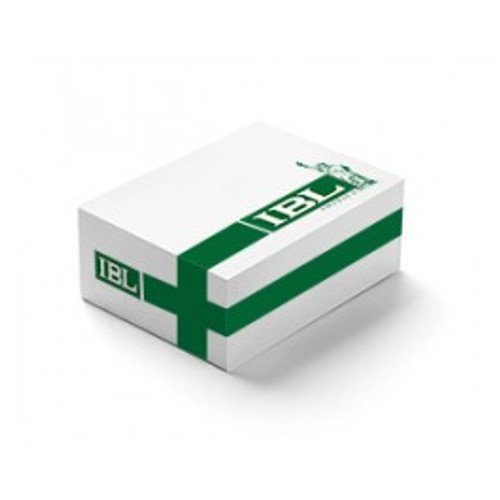Enzyme linked immunosorbent assay (ELISA) for the determination of human IgG antibodies in serum or plasma directed against Chlamydia trachomatis. For research use only, not for use in diagnostic procedures.<br><br>
Members of the order Chlamydiales are gram negative, intracellular bacteria. Chlamydia trachomatis, Chlamydia pneumoniae (Chlamydophila pneumoniae) and Chlamydia psittaci (Chlamydophila psittaci) are the relevant human pathogens. Chlamydia alternates between two morphological forms during its lifecycle, the elementary bodies (EB) and the reticular bodies (RB). The elementary bodies represent the extracellular and metabolically inert stage responsible for infection. Once inside the host-cell, the bacteria transform to the metabolically active reticular bodies. When the reproduction cycle has finished, the bacteria differentiate back to elementary bodies and leave the host.<br><br>
Chlamydia trachomatis is one of the most common sexually transmitted procaryotic pathogens. The bacterium infects preliminary epithelial cells of the urogenital- and respiratory tract as well as cells of the conjunctiva. The World Health Organization (WHO) estimates, that 90 million people annually become infected by Chlamydia trachomatis. According to the Robert Koch Institute (RKI), the prevalence in the European population with this pathogen is approximately 4 to 6 %.<br><br>
Chlamydia trachomatis infections may be asymptomatic in 70 % of females and in up to 50 % of males. Untreated, infections can result in serious damage and complications. The serovars A to C cause ceratoconjunctivits. Chronic infections during childhood can result in trachoma or blindness. Serovars D to K are pathogens of the urogenital tract, responsible for urethritis, proctitis and cervicitis. Salpinigits, endomitritis and perihepatitis are frequently the consequence of untreated cervicitis. Occasionally, fallopian tube obstructions and ectopic pregnancy, which are one of the most common reasons for infertility in women, may result. Furthermore, the risk of a premature delivery for infected pregnant women is also increased. The risk of transfer to the newborn during parturition is around 60% with conjunctivitis or pneumonia as possible sequelae. In addition to urethritis and proctitis, epidiymitis and prostatitis, which may lead to infertility, are possible consequences for men.<br><br>
The serovars L1 to L3 spread systematically through the lymphatic tissue causing the invasive disease known as lymphogranuloma venereum. Stricture and stenosis are the consequences, which have to be treated surgically.<br><br>
In cases of newborn chlamydiosis, circulating plasma- and B-cells generate IgM antibodies in high concentrations. Due to the fact that IgM antibodies are produced earlier than IgG and IgA, they are of higher significance in neonatal diagnostics. Mahoney and co-workers demonstrated that infected newborns displayed detectable IgM titres within 5 days after contact with the pathogen.<br><br>
The IBL-AMERICA ELISA Chlamydia trachomatis tests are based on a specific domain of the major outer membrane protein (MOMP). The use of this antigen decreases the frequency of false-positive results and consequently increases the specificity of the antibody detection in comparison to Micro-immunofluorescence tests and other ELISAs.
- Assay Description:
- 1 hour (37°C) + 30 min. (37°C) + 30 min. (37°C) = 2 hours total incubation time.
- Catalog number:
- IB05033
- configuration:
- 96 Determinations, 12x8 removable strips.
- controls:
- 1 negative control, ready to use.
- design:
- Enzyme immunoassay (ELISA) technique.
- FDA Status:
- For research use only, not for use in diagnostic procedures.
- MSDS:
- notes:
- The protocol for this product (see above) is intended to serve as an example only. Please refer to the Instructions For Use provided with the assay kit for precise details.
- Protocol:
- Sample types:
- Serum or plasma (EDTA, citrate, heparin).
- Sample volume:
- 10 µL
- standards:
- 1 cut-off standard, ready to use.
- Standard range:
- A calculated cut-off value is used to interpret results of unknowns.
- storage:
- 2 - 8 °C
- sensitivity:
- > 93%
- Species:
- Human
- Products related:
- Chlamydia trachomatis IgA ELISA, Chlamydia trachomatis IgM ELISA





